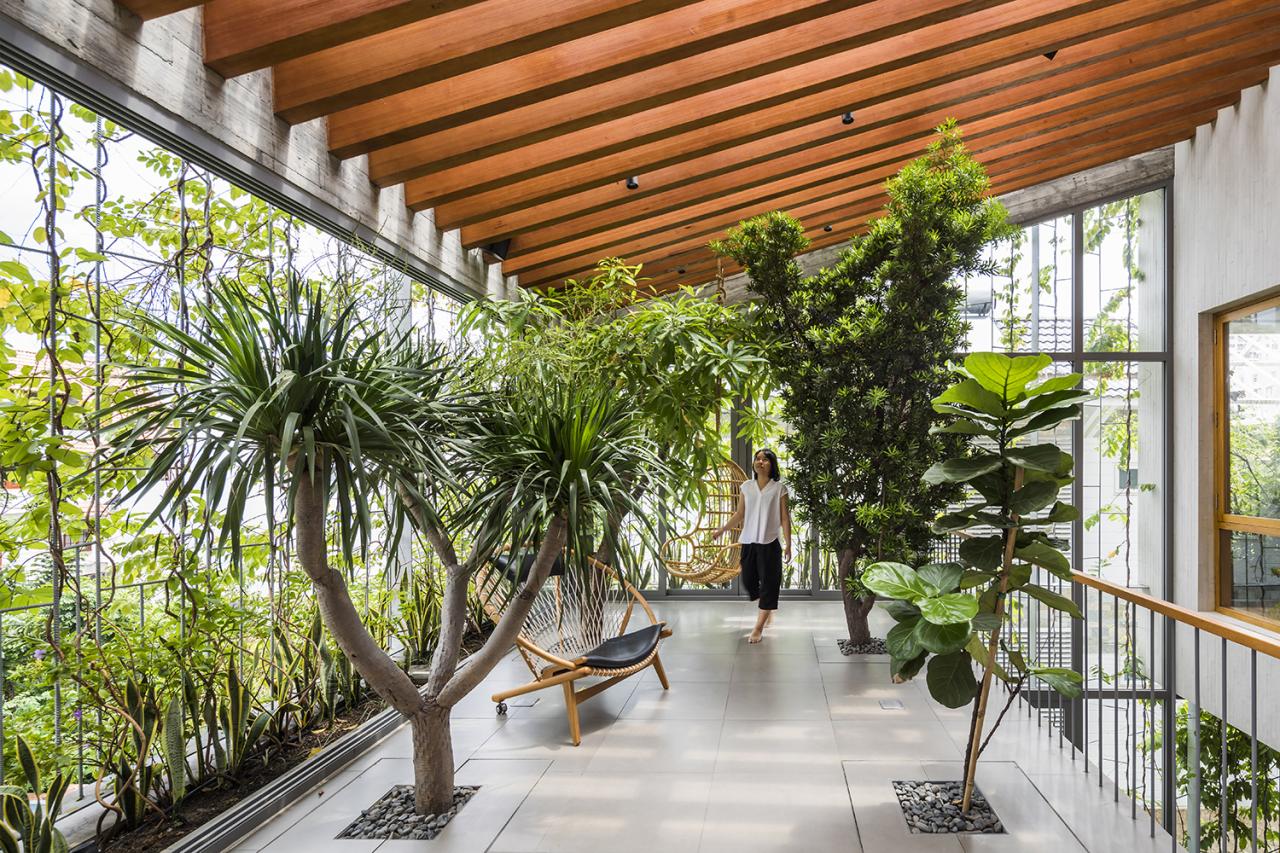Welcome to the urban jungle, where concrete and steel meet the vibrant hues of nature. Urban Jungle: Incorporating Plants in City Living Spaces invites you to embark on a journey of transforming your urban dwelling into a lush oasis. Discover the myriad benefits of greenery, from stress reduction to air purification, and delve into practical techniques for vertical gardening and plant selection in urban environments.
Join us as we explore the art of designing a plant-filled living space, harmonizing nature’s beauty with the urban landscape.
Prepare to be inspired as we unveil the secrets of plant care and maintenance in urban settings, empowering you to nurture a thriving indoor ecosystem. Embrace the urban jungle and let nature’s embrace enhance your city living experience.
Biophilic Benefits of Urban Greenery
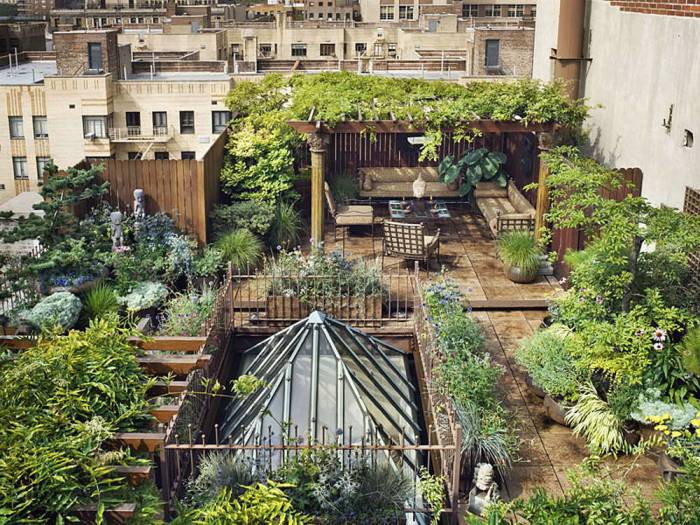
Incorporating plants into city living spaces offers a myriad of psychological and physiological benefits. This urban greenery serves as a vital link to nature, providing a sense of tranquility and well-being amidst the bustling city life.
Studies have shown that exposure to plants can significantly reduce stress levels. The mere presence of greenery has been found to lower cortisol, the stress hormone, and promote relaxation. Plants also contribute to improved air quality by absorbing pollutants and releasing oxygen.
This purified air can enhance respiratory health and overall well-being.
Enhancing Cognitive Function
- Research indicates that plants can improve cognitive function, including attention, memory, and problem-solving abilities.
- The presence of greenery in the workplace or study area has been linked to increased productivity and creativity.
Promoting Physical Health
- Plants can boost the immune system and reduce the risk of certain illnesses, such as colds and allergies.
- Exposure to plants has been associated with lower blood pressure and improved cardiovascular health.
Supporting Emotional Well-being
- Interacting with plants has been found to have a calming and restorative effect on the mind.
- Gardening and caring for plants can provide a sense of purpose and accomplishment, contributing to overall happiness and well-being.
The biophilic benefits of urban greenery are undeniable. By incorporating plants into our city living spaces, we can create environments that promote physical, mental, and emotional well-being, making our cities more livable and sustainable.
Vertical Gardening Techniques
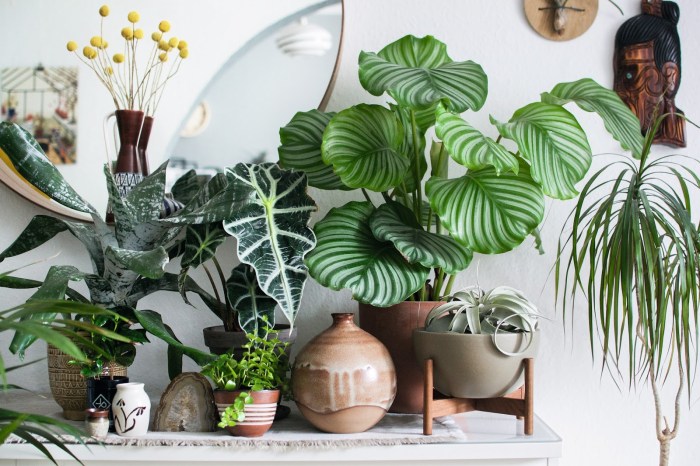
Vertical gardening is an innovative way to maximize space and bring greenery into urban environments. By utilizing vertical surfaces, you can create lush and vibrant living spaces that enhance your well-being and connect you with nature.
Living Walls
Living walls are vertical gardens installed on walls or other vertical surfaces. They are typically made of modular panels or planters that hold a variety of plants. Living walls can be customized to fit any space and can create a stunning visual impact.
- Benefits:Living walls improve air quality, reduce noise pollution, and provide insulation.
- Limitations:They require regular maintenance, including watering, fertilizing, and pruning.
Hanging Planters
Hanging planters are a versatile way to add vertical greenery to your space. They can be suspended from ceilings, walls, or balconies and can hold a variety of plants, including trailing vines, ferns, and succulents.
- Benefits:Hanging planters are easy to install and can be moved around to create different looks.
- Limitations:They may not be suitable for all plants, as some species require more space or support.
Trellises
Trellises are vertical structures that provide support for climbing plants. They can be made of wood, metal, or plastic and can be installed on walls, fences, or other vertical surfaces.
- Benefits:Trellises allow climbing plants to grow vertically, saving space and creating a unique visual effect.
- Limitations:They may not be suitable for all climbing plants, as some species require more support or specific growing conditions.
Plant Selection for Urban Spaces
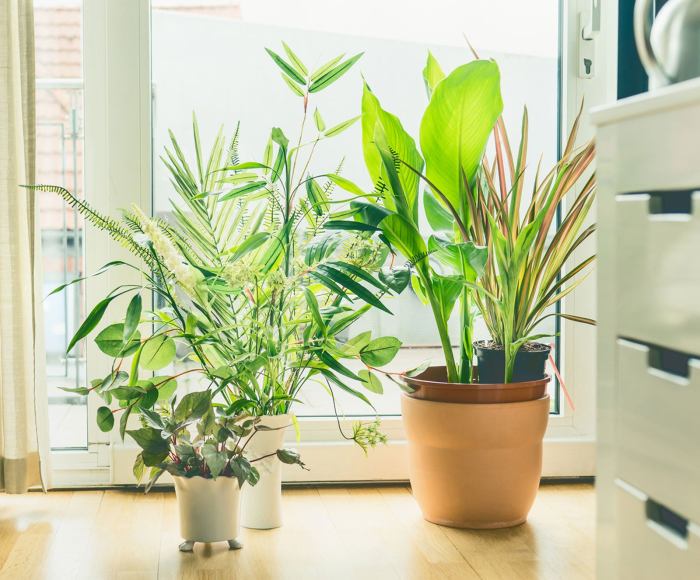
Bringing greenery into urban living spaces requires careful plant selection. Factors like light availability, temperature tolerance, and water requirements should be considered to ensure plant survival and well-being in the concrete jungle.
Light Availability
Assess the natural light conditions in your urban space. Some plants thrive in bright, direct sunlight, while others prefer indirect or even low light conditions. Consider the orientation of windows and balconies to determine the amount of light available.
Temperature Tolerance, Urban Jungle: Incorporating Plants in City Living Spaces
Urban environments can experience extreme temperatures, especially in high-rise buildings. Choose plants that can withstand the temperature fluctuations and drafts common in city living. Consider the average temperature range and the presence of heating or cooling systems.
Water Requirements
Urban living often means limited access to natural water sources. Select plants with varying water needs to accommodate busy lifestyles. Some plants are drought-tolerant and require infrequent watering, while others prefer moist soil and regular watering.
Recommended Plants for Urban Living Conditions
- Bright Light:Snake plant, ZZ plant, Peace lily, Monstera deliciosa
- Indirect Light:Philodendron, Pothos, Chinese evergreen, Spider plant
- Low Light:Cast iron plant, Aspidistra elatior, Peace lily, Sansevieria trifasciata
- Drought-Tolerant:Echeveria, Aloe vera, Sedum, Yucca
- Moist Soil:Ferns, Peace lily, Calathea, Dracaena
Designing a Plant-Filled Living Space: Urban Jungle: Incorporating Plants In City Living Spaces
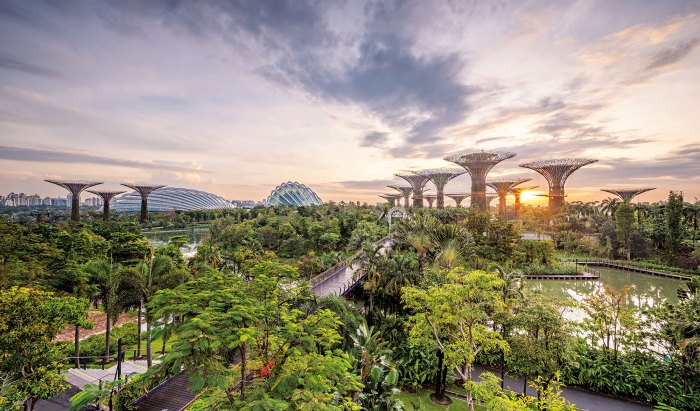
Creating a harmonious living space filled with plants in an urban setting requires careful consideration. Plants can transform urban dwellings into vibrant and inviting oases, fostering a sense of well-being and connection with nature. By incorporating plants strategically, we can enhance the aesthetics, functionality, and overall ambiance of our living spaces.
To achieve a cohesive and aesthetically pleasing plant-filled environment, it’s essential to adhere to a few key principles. Firstly, consider the overall flow and balance of the space. Avoid cluttering the room with too many plants, as this can create a sense of chaos and visual overwhelm.
Instead, select a few statement plants to serve as focal points and arrange them strategically throughout the room. These larger plants can create a sense of depth and drama, drawing the eye and adding visual interest.
Using Plants as Privacy Screens and Space Dividers
Plants can also serve practical purposes beyond their aesthetic appeal. In urban settings where privacy is often limited, tall, leafy plants can be used as effective privacy screens. Position them near windows or doorways to create a natural barrier that obscures the view from outside while still allowing natural light to filter through.
Similarly, plants can be used as space dividers to create distinct zones within a room. A large plant placed strategically can effectively separate a living area from a dining space, adding both privacy and a touch of greenery to the space.
Tips for Creating a Cohesive Plant-Filled Environment
To create a cohesive and aesthetically pleasing plant-filled environment, it’s important to pay attention to the details. Choose plants that complement the existing decor and color scheme of the room. Consider the size and shape of the plants in relation to the space available, and opt for a mix of textures and heights to add visual interest.
Additionally, it’s essential to provide adequate lighting for your plants. Natural light is ideal, but if that’s not possible, invest in artificial grow lights to ensure your plants thrive indoors.
Plant Care and Maintenance in Urban Settings
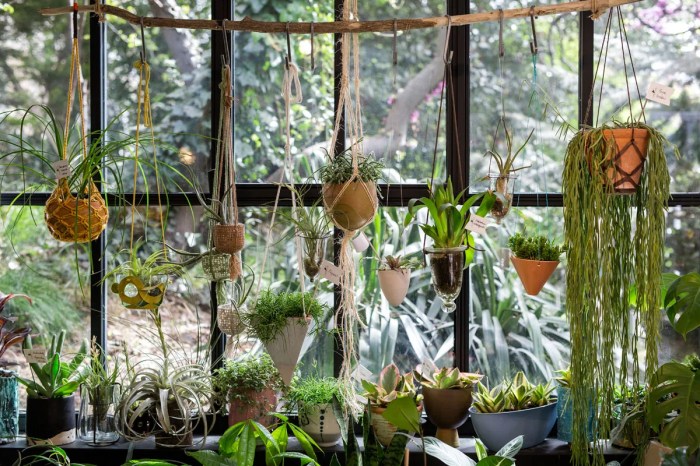
Maintaining healthy plants in urban environments requires adapting to unique challenges, including limited space, reduced natural light, and potential pests. This guide explores essential plant care practices and provides solutions for overcoming these obstacles, ensuring thriving greenery in your city abode.
Watering
Regular watering is crucial, but urban environments often have fluctuating humidity levels. Use a moisture meter to determine when soil is dry and adjust watering frequency accordingly. Consider using self-watering pots or moisture-wicking soil to reduce the risk of overwatering.
Fertilizing
Fertilizing provides essential nutrients for plant growth. Choose balanced, water-soluble fertilizers and apply them according to the manufacturer’s instructions. Slow-release fertilizers can provide a steady supply of nutrients over time.
Pest Control
Urban environments can attract pests. Regularly inspect plants for signs of infestation and address them promptly. Use organic pest control methods such as neem oil, insecticidal soap, or companion planting to minimize the use of harmful chemicals.
Limited Space and Natural Resources
In limited urban spaces, vertical gardening techniques can maximize plant growth. Utilize hanging planters, wall-mounted trellises, and tiered shelves to create a vertical green oasis. Consider using drought-tolerant plants and incorporating artificial lighting to supplement natural sunlight.
Regular Plant Care Checklist
- Check soil moisture and water accordingly
- Fertilize plants regularly
- Inspect for pests and address infestations
- Prune dead or diseased leaves
- Repot plants as needed
- Rotate plants to ensure even light exposure
Ultimate Conclusion
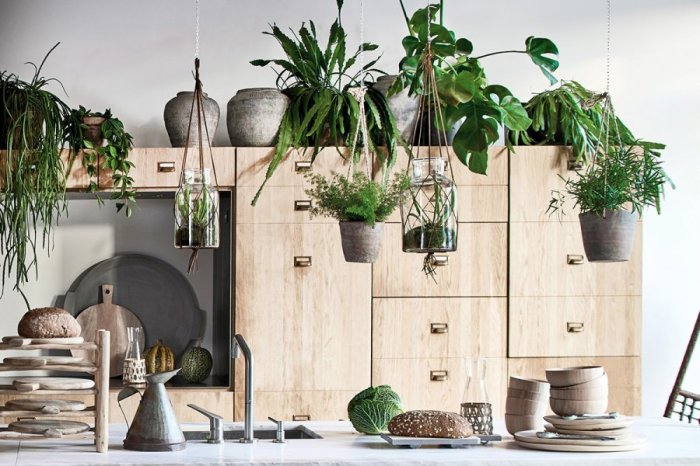
As we conclude our exploration of the urban jungle, remember that incorporating plants into your city living space is not merely a decorative endeavor but a transformative one. The psychological, physiological, and aesthetic benefits of greenery are undeniable, creating a sanctuary of well-being amidst the urban hustle and bustle.
Embrace the urban jungle, cultivate your own indoor oasis, and revel in the harmony of nature and city living.
FAQ Section
Is vertical gardening suitable for small apartments?
Absolutely! Vertical gardening is an excellent solution for space-constrained apartments. By utilizing vertical space, you can maximize plant growth without sacrificing floor area.
What are some low-maintenance plants for urban environments?
Consider plants like snake plants, ZZ plants, and pothos. These resilient species tolerate neglect and thrive in low-light conditions, making them ideal for busy urban dwellers.
How can I create a cohesive plant-filled living space?
Group plants with similar light and water requirements together. Use plants of varying heights and textures to add visual interest. Consider the overall color scheme of your space and choose plants that complement your decor.
